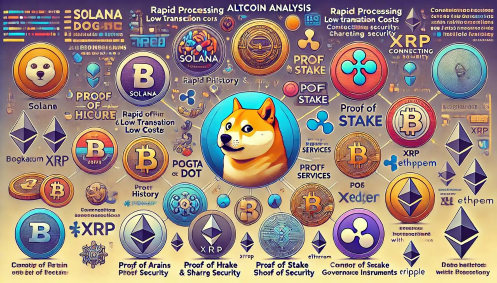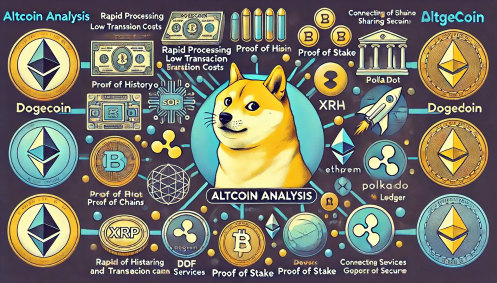
Solana has rapidly gained attention due to its incredibly fast processing times and low transaction costs. Founded by Anatoly Yakovenko, Solana introduces a novel consensus mechanism known as Proof of History (PoH) alongside the underlying Proof of Stake (PoS). This innovation allows for greater scalability, claiming to handle over 50,000 transactions per second without sacrificing decentralization. Solana aims to support high-speed decentralized apps (dApps) and crypto-currencies, making it a favorite for developers looking to build complex applications within finance, gaming, and beyond.
Polkadot (DOT) offers a unique approach to blockchain interoperability and scalability. Created by Ethereum co-founder Gavin Wood, Polkadot is designed to support multiple chains within a single network. It allows different blockchains to transfer messages and value in a trust-free fashion; sharing their unique features while pooling their security. Polkadot is structured to connect private chains, consortium chains, public networks, and oracles, allowing them to share information and transactions through the Polkadot Relay Chain.
XRP and Ripple often get mentioned together, but they serve different purposes. XRP is the currency that runs on a digital payment platform called RippleNet, which is on top of a distributed ledger database called XRP Ledger. While RippleNet is run by a company called Ripple, the XRP Ledger is open-source and is not based on blockchain, but rather on a distributed ledger database. The main focus of Ripple has been to enable secure, instant, and nearly free global financial transactions of any size with no chargebacks. Ripple and XRP have found immense utility in the banking sector, where traditional processes can be cumbersome and slow.

Meme Coins like Dogecoin started as internet jokes rather than serious cryptocurrency projects. Dogecoin was created in 2013 by Billy Markus and Jackson Palmer as a light-hearted alternative to Bitcoin. Its mascot, a Shiba Inu dog, and friendly branding helped it gain a massive following. Unlike many cryptocurrencies that are meant to solve complex financial problems, Dogecoin was created to spread goodwill and fun. However, it has been taken more seriously in recent years, often due to endorsements by high-profile figures like Elon Musk.
Tokens represent a broad category within the cryptocurrency world. They are typically built on existing blockchains like Ethereum and can represent a variety of assets or utilities. For example, tokens can be used to represent digital art in the form of non-fungible tokens (NFTs), participate in decentralized finance (DeFi) services, or even act as governance instruments within decentralized organizations. Unlike coins, which typically aim to be used as money, tokens can have more specific uses and are often integral to the functioning of decentralized apps.